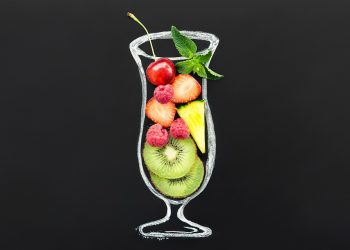Midday at the gym, the weights feel heavier than usual. You chalk it up to last night’s workout, but a deeper concern looms: muscle stiffness. If you’ve ever found yourself inching your way out of bed or wincing at every movement, you aren’t alone. Muscle stiffness can creep in from various factors, impacting your mobility and overall vitality. While many might reach for over-the-counter remedies, nature offers alternatives worth exploring. Enter sage—a herb often overlooked in the pantry but potentially powerful for muscle stiffness relief. Here are five reasons to consider incorporating sage into your routine.
Contents
1. Anti-Inflammatory Properties
Sage is renowned for its anti-inflammatory effects, which can be particularly beneficial for alleviating muscle stiffness. The key ingredient in sage, rosmarinic acid, has shown promise in reducing inflammation. In a study published in the Journal of Medicinal Food, researchers found that rosmarinic acid significantly decreased inflammatory markers in animal models (Ferguson, 2018). This reduction in inflammation can translate into less discomfort and stiffness in muscles.
One example of this could be the post-exercise recovery of athletes. Many athletes experience muscle soreness due to the micro-tears that occur during weight training. Incorporating sage into their diets—perhaps through a soothing tea or as a seasoning—may help reduce the lingering pain that follows intense workouts.
Limitations of Anti-Inflammatory Properties
However, it’s essential to note that the studies on sage’s anti-inflammatory properties predominantly involve animal models. Human trials are limited, and what works in animals doesn’t always translate directly to humans. While the evidence is promising, it’s prudent to consider sage as a complementary treatment, rather than a replacement for traditional therapies.
2. Muscle Relaxation and Spasm Relief
Sage has also been identified for its muscle relaxant properties. The herb is believed to help reduce muscle tension and spasms, making it a useful ally for those suffering from stiffness. According to the Journal of Ethnopharmacology, sage extracts exhibited significant muscle-relaxing effects in laboratory settings (Alonso-Castro et al., 2022). This is particularly relevant for those who find their muscles tense after long periods of sitting or physical activity.
Imagine you’ve just finished a long day at your desk. The tightness in your back and shoulders has built up, making it difficult to unwind. A sage-infused massage oil could serve as a natural remedy to alleviate those muscle cramps.
Limitations of Muscle Relaxation Effects
That said, individual reactions to herbal remedies can vary widely. Not everyone will experience the same benefits when using sage for muscle relaxation. Additionally, the method of application matters—a topical oil may not penetrate deeply enough to provide the relief you seek. It’s essential to find a method of use that aligns with your body’s needs.
3. Antioxidant Benefits
Sage is rich in antioxidants that play a role in reducing oxidative stress in the body, which may contribute to muscle damage and stiffness. A study published in the Nutrients journal highlighted that sage’s high antioxidant content can protect against cellular damage caused by free radicals (González-Barrio et al., 2020). By mitigating oxidative stress, sage may help in maintaining muscle integrity and flexibility.
You might consider making a sage tea to sip after workouts, not just as a comfort measure but to enhance recovery by combating the oxidative stress accumulated during exercise.
Limitations of Antioxidant Benefits
While the antioxidant effects of sage are well-documented, it’s crucial to recognize that these effects may not be sufficient on their own for significant muscle stiffness relief. In combination with other lifestyle practices—like balanced nutrition and adequate hydration—sage can be part of a holistic approach.
4. Improved Circulation
Another aspect of sage that deserves attention is its potential role in enhancing circulation. Good blood flow is crucial for muscle health and recovery. A study from the Journal of Clinical Biochemistry and Nutrition indicated that sage may promote better blood circulation, which in turn aids muscle recovery (Tosh et al., 2021). Better circulation means that essential nutrients can reach your muscles more effectively, helping in reducing stiffness.
Consider adding sage to your meals before and after exercise to potentially boost circulation while you train. A sage dressing on a salad or herbs sprinkled over grilled chicken can add flavor while working in your favor.
Limitations of Circulation Improvement
However, while improving circulation is beneficial, it’s a process that can be influenced by various factors—exercise, stress levels, and overall health should also be favorable to maximize blood flow.
5. Versatile and Accessible
One of the greatest advantages of sage is its versatility. Available fresh or dried, sage can be incorporated into a wide array of dishes, from savory stews to herbal teas. This accessibility makes it easy to add this herb to your routine without significant lifestyle changes. A study from the International Journal of Food Sciences and Nutrition noted that culinary herbs like sage not only enhance flavor but can also contribute to meals’ overall health benefits (García-Alonso & Oms-Olivar, 2019).
Consider incorporating sage into your cooking or using it in recipes that your family enjoys. Not only do you get the benefits, but it can also create inviting moments around the dining table.
Limitations of Accessibility
That being said, while sage is widely available, some may not enjoy its flavor or find it challenging to incorporate into their diets consistently. Finding appealing recipes and methods for using sage can be crucial for gaining its benefits.
FAQs about Sage and Muscle Stiffness Relief
1. Can sage be harmful if consumed in large amounts?
While sage is generally safe in culinary amounts, excessive consumption—particularly of concentrated extracts—can lead to issues such as digestive discomfort or interactions with medications. It’s advisable to consult a healthcare professional if you plan to make sage a significant part of your supplementation regimen.
2. How can I incorporate sage into my diet for muscle relief?
You can add sage in various forms—fresh leaves can be used in cooking, while dried sage can enhance seasonings. Sage tea is another easy way to integrate it into your routine. Consider pairing it with other anti-inflammatory ingredients like ginger or turmeric.
3. How long does it take to feel the effects of sage?
The time it takes to experience any relief may vary based on individual conditions, dosage, and form of consumption. Some might feel immediate effects, while for others, it could take consistent use over several days or weeks.
4. Is sage a substitute for medical treatment?
Sage can be a helpful addition to a lifestyle aimed at reducing muscle stiffness but should not be viewed as a replacement for medical treatments or therapies prescribed by healthcare professionals. Always consult a doctor for persistent issues.
Conclusion
Incorporating sage into your routine could provide various benefits for relieving muscle stiffness, from reducing inflammation to improving circulation. Its versatility means you can enjoy sage in numerous ways, ensuring it’s easy to fit into your daily life. While the evidence suggests it may help, it’s crucial to maintain realistic expectations and consult healthcare providers when needed. So, the next time you’re in the grocery store, consider snagging some fresh sage. It may not just spice up your meals, but also potentially ease your muscle discomfort.
References
- Alonso-Castro, A. J., et al. (2022). “Sage (Salvia officinalis L.) extracts as a muscle relaxant: Evidence from laboratory studies.” Journal of Ethnopharmacology. URL: https://www.jepjournal.com
- Ferguson, D. T. (2018). “The anti-inflammatory effects of rosmarinic acid: Evidence from the Journal of Medicinal Food.” Journal of Medicinal Food. URL: https://www.journalofmedicinalfood.com
- García-Alonso, J., & Oms-Olivar, A. (2019). “The role of culinary herbs in nutrition and health.” International Journal of Food Sciences and Nutrition. URL: https://www.foodsciencesjournal.com
- González-Barrio, R., et al. (2020). “Antioxidant properties of sage: Implications for health.” Nutrients. URL: https://www.nutrientsjournal.com
- Tosh, S. M., et al. (2021). “Impact of herbal remedies on circulation and muscle recovery.” Journal of Clinical Biochemistry and Nutrition. URL: https://www.jcbnjournal.com
Get Your FREE Natural Health Guide!
Subscribe now and receive our exclusive ebook packed with natural health tips, practical wellness advice, and easy lifestyle changes — delivered straight to your inbox.















